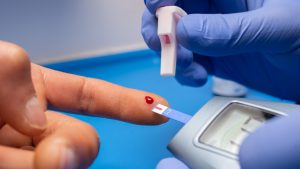Living with diabetes brings unique opportunities for self-care, including maintaining healthy skin. By understanding how to nurture our skin, we can enhance our overall well-being. This guide offers uplifting tips and practices to ensure your skin remains vibrant and healthy.
1. The Importance of Skincare in Diabetes Management
- Skin as a Vital Organ: The skin plays a crucial role in our health, acting as a barrier and a reflection of our inner wellness. Prioritizing skincare can lead to a more fulfilling life.
- Connection to Overall Health: Healthy skin is often a sign of balanced blood sugar levels. Caring for your skin can enhance your diabetes management journey.
2. Daily Skincare Routine
- Gentle Cleansing: Use a mild, hydrating cleanser to keep the skin clean without stripping its natural oils. This sets a positive foundation for your skincare routine.
- Moisturizing: Regularly applying a high-quality moisturizer helps combat dryness, which can be common in people with diabetes. Look for products that contain ingredients like hyaluronic acid and glycerin.
- Sun Protection: Incorporating a broad-spectrum sunscreen into your daily routine is essential. This protects your skin from UV damage and helps maintain its youthful appearance.
3. Nutrition and Hydration for Healthy Skin
- Balanced Diet: Consuming a variety of fruits, vegetables, whole grains, and healthy fats nourishes your skin from the inside out. Foods rich in vitamins A, C, and E can be particularly beneficial.
- Staying Hydrated: Drinking plenty of water throughout the day supports skin hydration and overall health. Aim for at least 8 cups of water daily.
4. Mindful Practices for Skin Health
- Stress Management: Engage in activities that reduce stress, such as yoga, meditation, or hobbies. Stress can impact skin health, so finding balance is vital.
- Regular Exercise: Physical activity improves circulation and boosts skin health. It’s also a great way to manage diabetes effectively.
5. Listening to Your Skin
- Recognizing Changes: Be attentive to your skin’s signals. If you notice any unusual changes or irritation, seek advice from a healthcare professional. Early intervention is always empowering.
- Personalized Care: Everyone’s skin is different. Experiment with products and routines to find what works best for you, celebrating the uniqueness of your skin.
6. Building a Supportive Community
- Connecting with Others: Engaging with diabetes support groups or skincare communities can provide encouragement and valuable tips. Sharing experiences creates a sense of belonging.
- Resources and Recommendations: Offer links to reputable skincare brands and diabetes organizations that provide additional support and information.
Conclusion
Caring for your skin while managing diabetes is a journey of self-love and empowerment. By adopting a positive skincare routine and nurturing your overall health, you can enjoy radiant skin and improved well-being. Let’s celebrate the beautiful connection between diabetes management and self-care!

Type 2 Diabetes: Is It Really Reversible?
A recent National Geographic article [link] explores how type 2 diabetes could be reversible with the right approaches. This condition, which affects millions of people worldwide, has long been considered a chronic and progressive disease. However, recent research challenges this perception and suggests that with lifestyle changes and the right approach, remission is possible. The

How Do GLP-1 Drugs Compare? A Breakdown of Ozempic, Mounjaro, and Trulicity
GLP-1 receptor agonists have revolutionized diabetes management, with drugs like Ozempic, Mounjaro, and Trulicity leading the market. But how do these medications compare in terms of effectiveness, side effects, and patient outcomes? Let’s explore their differences and what they mean for diabetes patients. Understanding GLP-1 Medications GLP-1 receptor agonists mimic a natural hormone that helps

Why Has Medicare Spending on Diabetes Medications Skyrocketed in 5 Years?
In the past five years, Medicare spending on diabetes medications has increased nearly fivefold, reaching $35.8 billion in 2023. This surge has been primarily driven by the growing use of GLP-1 drugs such as Ozempic, Mounjaro, and Trulicity. But what is behind this cost escalation, and how does it affect patients and the U.S. healthcare

The Gut Microbiota and Blood Sugar Control: A Hidden Connection
The human gut is home to trillions of bacteria that play a crucial role in digestion, immune function, and even metabolism. Recent research has revealed a fascinating link between the gut microbiota and blood sugar regulation, shedding light on how the balance of microbes in our intestines can influence diabetes risk and overall metabolic health.

The Dawn Phenomenon: Why Blood Sugar Rises While You Sleep
For many people with diabetes, waking up with high blood sugar levels can be frustrating—especially if they didn’t eat anything overnight. This early-morning spike in blood glucose is known as the Dawn Phenomenon, and it happens due to natural hormonal changes in the body. But why does it occur, and how can it be managed?

The Influence of Red Light on Blood: Can It Improve Diabetes?
Type 2 diabetes is a metabolic disease characterized by insulin resistance and elevated blood glucose levels. In the search for complementary alternatives to improve glycemic control, red light therapy has gained attention due to its potential to enhance circulation, reduce inflammation, and optimize cellular function. But what does science say about it? ✨ What is

